Spotted Lanternfly
Spotted Lanternfly (Lycorma delicatula)
New invasive species in the United States to be on the lookout for. Early detection is key to keeping the Spotted Lanternfly out of California. See the attached newsletter (pdf) en español for photos of the different life stages, species details and identification.
Invasive species have the potential to cause high levels of economic damage when introduced into new environments that lack the predators that normally suppress their population in their native environments. International and national travel and commerce are ideal avenues for the introduction of exotic pests into the United States and California. Therefore, the identification and early detection of exotic pests are key to preventing their establishment in California. Everyone, including growers, PCA’s, field workers, and home gardeners, can play an important role in keeping exotic pests out of your county by being the eyes and ears needed for early detection of the next exotic pest.
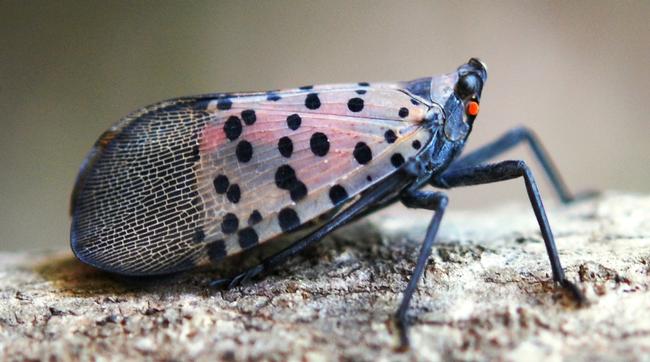
The spotted lanternfly (SLF) (Lycorma delicatula) is a new exotic pest that was first detected in Pennsylvania in 2014 (Figure 1 It has since been found in 20 US states (NYSIPM interactive SLF map; 9-12-24). SLF is a sizable planthopper (~1” length and ~0.5” width) that is native to Southeastern Asia including parts of China, Taiwan, Vietnam and invasive in Japan and South Korea. This planthopper has a wide host range consisting of 103+ plant species with at least 56 feeding hosts identified so far in North America. SLF has caused economic damage to grapevines along with feeding on fruit trees (apple, cherry, stone fruits), hops, and woody ornamentals. Its preferred host is the invasive tree of heaven (Ailanthus altissma), grapevines, black walnut and maple. SLF have piercing-sucking mouthparts and produce large quantities of honeydew that acts as a substrate for growth of sooty molds. In addition to being an agricultural pest, SLF may also be a nuisance pest in urban areas due to their aggregation behavior (Figure 2).
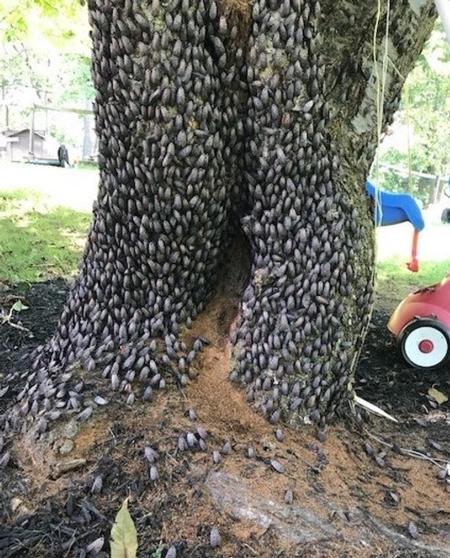
In Pennsylvania, the spotted lanternfly has one generation per year. Nymphs emerge between May and June and go through four immature stages. Adults start to emerge by late July. SLF overwinter as eggs which are laid between September to November on smooth tree surfaces and inanimate objects such as telephone poles, stones, pallets, outdoor equipment, firewood, railway cars, vehicles, etc. SLF’s behavior of laying eggs on non-plant items contributes to their wide dispersal ability and likelihood of unintentional introduction into new areas.
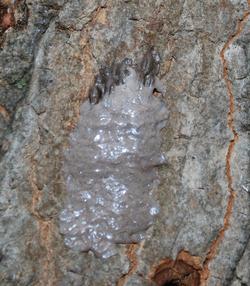
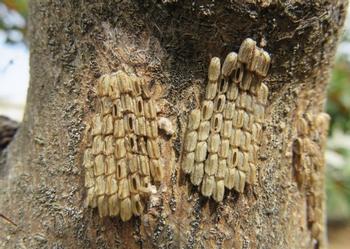
Each female produces one to two egg masses of 30 to 50 eggs each. Seed-like eggs are laid in multiple successive rows and covered with a yellowish-brown waxy deposit (Figure 3). The first three immature stages are black with white spots and lack wings. The fourth immature stage is red and black with white spots and possess small wing pads (Figure 4).
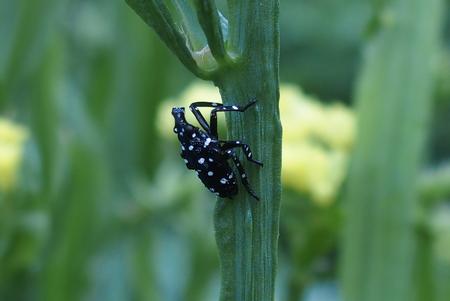
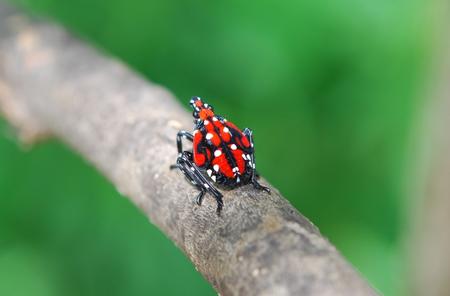
Adults have a stout yellow abdomen with incomplete black bands (Figure 5) and two sets of wings: the forewings and the hindwings. The forewings are a tannish-cream color with black spots changing to small black rectangles toward the tips. The hindwings are primarily black and red, with black spots appearing in the red portions. The hindwings are not noticeable when at rest (Figure 6). Adults tend to hop when moving instead of fly.
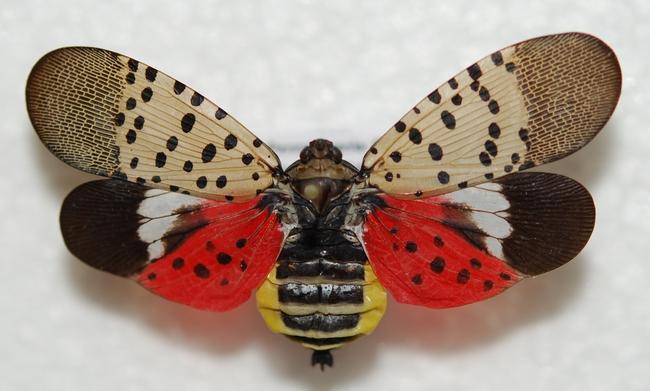
The spotted lanternfly has the ability to negatively impact high value commodity crops in California if it were to become established. In an effort to proactively respond to such possibility, the CDFA has funded researchers at UC Berkeley and UC Riverside to test biological control agents of the SLF. The Proactive IPM Solutions grant program funds research to identify and test IPM strategies for anticipated invasive species in an effort to rapidly implement management options if SLF were to be discovered in California. As the old adage goes, an ounce of prevention is worth a pound of cure.
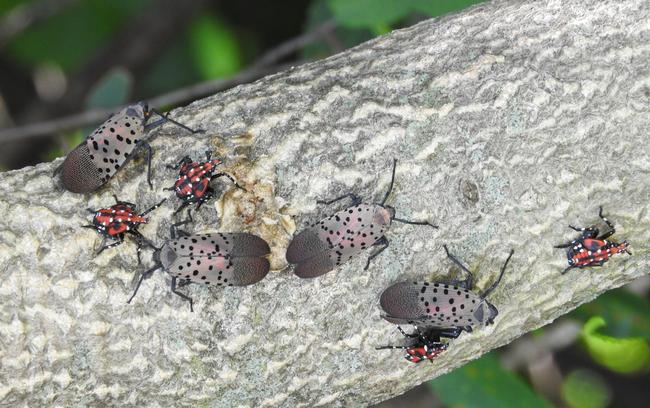
Since the tree of heaven is the preferred host of the adult SLF, trees can be visually monitored for local detection. If you suspect you have found SLF, it is important to report your sighting to your local county Agricultural Commissioner’s office right away. Document the exact location of the finding and either collect the insect in a sealable container to be delivered to the office or take clear photographs of the suspected SLF. Nymphs cannot fly and adults do not readily fly away when approached so both can be easily collected. Early detection is key and together, we can all play a role in keeping the Spotted Lanternfly out of California.
Photo Credits
Figures 1, 2, 6. Lawrence Barringer, Pennsylvania Department of Agriculture, Bugwood.org
Figure 3. Pennsylvania Department of Agriculture, Bugwood.org (left) Kenneth R. Law, USDA APHIS PPQ, Bugwood.org (right)
Figure 4. Emelie Swackhamer, Penn State University, Bugwood.org (left) Lawrence Barringer, Pennsylvania Department of Agriculture, Bugwood.org (right)
Figure 5. Richard Gardner, Bugwood.org

